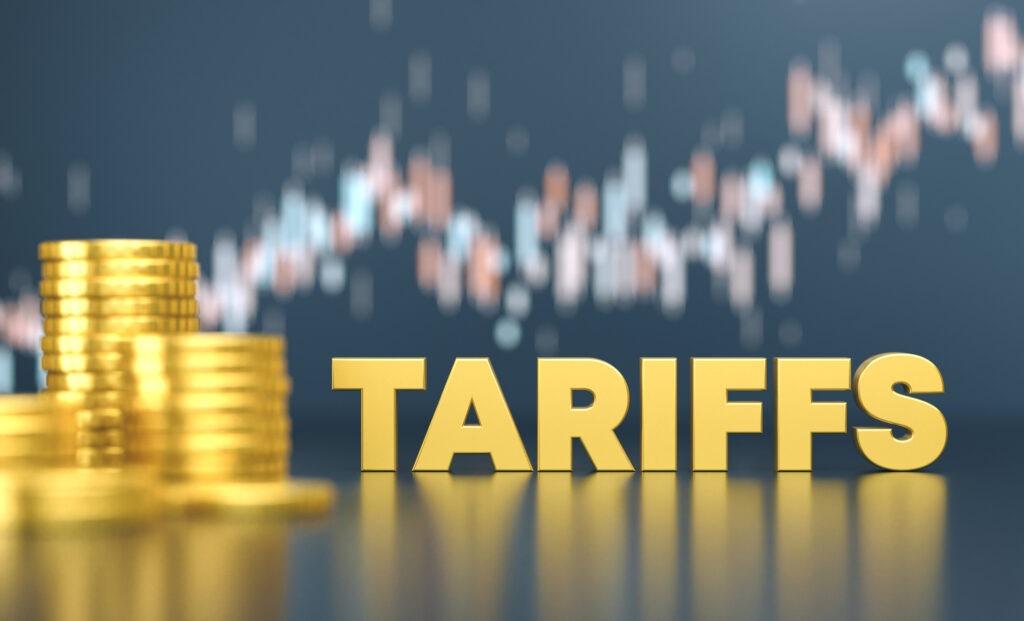Self-cleaning Materials Market annual growth rate (CAGR) of 11.2% projected through the forecast period
The Self-cleaning Materials Market
is rapidly gaining traction globally, driven by the increasing demand for low-maintenance, durable, and hygienic surfaces across industries. These materials, incorporating photocatalytic, hydrophobic, or antimicrobial properties, are revolutionizing construction, healthcare, automotive, and consumer goods sectors.
Rising awareness about hygiene, energy efficiency, and sustainable building practices is driving market adoption. Self-cleaning surfaces minimize maintenance costs, reduce chemical cleaning requirements, and improve operational efficiency, aligning with both environmental and economic objectives.
Technological advancements, such as nano-coatings and advanced polymer formulations, are enhancing the functionality and durability of self-cleaning materials. These innovations allow for versatile applications in both indoor and outdoor environments, boosting global market prospects.
Request a Sample Report: https://researchintelo.com/request-sample/343
The market is influenced by multiple dynamics. Increasing urbanization and industrialization are driving demand for construction materials that offer low maintenance while maintaining aesthetic appeal. Buildings, façades, and windows embedded with self-cleaning films or coatings are gaining popularity in residential and commercial projects.
Key market drivers include the rise of smart homes and intelligent buildings. Self-cleaning materials not only reduce labor costs but also contribute to energy efficiency by maintaining clean surfaces that enhance solar panel performance and lighting reflectivity.
Despite promising growth, market expansion faces challenges. High manufacturing costs, technical complexity in production, and limited awareness in developing regions may restrain widespread adoption. Nonetheless, the long-term cost savings and performance benefits provide a strong incentive for adoption.
View Full Report: https://researchintelo.com/report/self-cleaning-materials-market
Regional insights reveal that North America and Europe are leading markets due to advanced infrastructure, stringent hygiene regulations, and high adoption of smart building technologies. Asia-Pacific is expected to exhibit the fastest growth, driven by urbanization, industrial expansion, and rising consumer awareness.
According to the latest research conducted in 2025, the global self-cleaning materials market size reached USD 1.87 billion in 2024, with a robust compound annual growth rate (CAGR) of 11.2% projected through the forecast period. By 2033, the market is expected to achieve a value of USD 5.36 billion, reflecting the surging demand for advanced materials that minimize maintenance and enhance product longevity.
Opportunities exist in developing economies, where retrofitting public and commercial infrastructure with self-cleaning materials can reduce maintenance costs and improve sanitation. Increasing environmental regulations also encourage industries to adopt sustainable and chemical-free cleaning solutions.
Enquire Before Buying: https://researchintelo.com/request-for-customization/343
Technological advancements continue to redefine the market. Innovations in superhydrophobic and photocatalytic coatings are enhancing surface properties, enabling dirt, dust, and microbial particles to be removed automatically under light or water exposure. Multi-functional coatings combining UV protection and anti-bacterial features are expanding application areas.
Segment analysis indicates construction as the primary end-user, followed by healthcare, automotive, and electronics sectors. In healthcare, self-cleaning surfaces reduce infection risks, while in automotive applications, coatings improve durability, aesthetic appeal, and fuel efficiency by maintaining clean surfaces.
Adoption of nanotechnology and advanced polymer engineering ensures high performance and long-lasting efficacy. Researchers are developing materials that resist wear and environmental degradation, extending product life and enhancing market reliability.
Check Out the Report: https://researchintelo.com/checkout/343
Market challenges include fluctuating raw material prices, production scalability issues, and regulatory compliance for chemical coatings. However, innovations in eco-friendly materials and cost-effective production methods are expected to mitigate these challenges, encouraging wider adoption.
Collaborations between material scientists, industrial manufacturers, and research institutions are fostering product development. Customized self-cleaning solutions for different industries, such as transparent coatings for solar panels or antimicrobial films for hospitals, are creating new revenue opportunities.
Future trends indicate integration with smart and interactive surfaces. IoT-enabled self-cleaning materials that monitor dirt accumulation and adjust cleaning cycles are emerging as next-generation solutions. Hybrid materials combining energy efficiency, antimicrobial properties, and aesthetic design are also expected to drive growth.
The market outlook remains positive, with increasing investments in green construction, smart city initiatives, and consumer preference for low-maintenance, high-performance materials driving sustained growth. Supportive government policies on sustainability and hygiene further enhance market potential.
Regional opportunities are abundant in Asia-Pacific, particularly China, India, and Japan, where rapid urbanization and rising demand for smart infrastructure accelerate adoption. Mature markets in North America and Europe continue to lead in innovation and high-value applications, while emerging regions offer untapped potential.
Request a Sample Report: https://researchintelo.com/request-sample/343
Key players in the self-cleaning materials market focus on R&D, product innovation, and strategic partnerships. Development of multi-functional coatings, advanced polymers, and eco-friendly formulations is shaping competitive dynamics. Although specific company names are not discussed in this report, these strategies are defining the market landscape.
The Self-cleaning Materials Market exemplifies the convergence of technology, sustainability, and efficiency. With innovations in smart coatings, increasing adoption across multiple sectors, and supportive regulatory frameworks, the market is expected to witness significant revenue growth over the forecast period.
In conclusion, self-cleaning materials are transforming construction, healthcare, automotive, and consumer goods industries. Their ability to reduce maintenance costs, enhance hygiene, and support environmental sustainability positions them as essential materials for future infrastructure and industrial development worldwide.
Key Highlights:
Market CAGR: ~11.2% (2024–2033)
Dominant Materials: Titanium dioxide, Silica, Polymers
Primary Drivers: Hygiene regulations, sustainable construction, smart building adoption
Opportunities: Multi-functional coatings, IoT integration, eco-friendly materials
Regional Insights: North America, Europe, Asia-Pacific as key markets
The Self-cleaning Materials Market
is rapidly gaining traction globally, driven by the increasing demand for low-maintenance, durable, and hygienic surfaces across industries. These materials, incorporating photocatalytic, hydrophobic, or antimicrobial properties, are revolutionizing construction, healthcare, automotive, and consumer goods sectors.
Rising awareness about hygiene, energy efficiency, and sustainable building practices is driving market adoption. Self-cleaning surfaces minimize maintenance costs, reduce chemical cleaning requirements, and improve operational efficiency, aligning with both environmental and economic objectives.
Technological advancements, such as nano-coatings and advanced polymer formulations, are enhancing the functionality and durability of self-cleaning materials. These innovations allow for versatile applications in both indoor and outdoor environments, boosting global market prospects.
Request a Sample Report: https://researchintelo.com/request-sample/343
The market is influenced by multiple dynamics. Increasing urbanization and industrialization are driving demand for construction materials that offer low maintenance while maintaining aesthetic appeal. Buildings, façades, and windows embedded with self-cleaning films or coatings are gaining popularity in residential and commercial projects.
Key market drivers include the rise of smart homes and intelligent buildings. Self-cleaning materials not only reduce labor costs but also contribute to energy efficiency by maintaining clean surfaces that enhance solar panel performance and lighting reflectivity.
Despite promising growth, market expansion faces challenges. High manufacturing costs, technical complexity in production, and limited awareness in developing regions may restrain widespread adoption. Nonetheless, the long-term cost savings and performance benefits provide a strong incentive for adoption.
View Full Report: https://researchintelo.com/report/self-cleaning-materials-market
Regional insights reveal that North America and Europe are leading markets due to advanced infrastructure, stringent hygiene regulations, and high adoption of smart building technologies. Asia-Pacific is expected to exhibit the fastest growth, driven by urbanization, industrial expansion, and rising consumer awareness.
According to the latest research conducted in 2025, the global self-cleaning materials market size reached USD 1.87 billion in 2024, with a robust compound annual growth rate (CAGR) of 11.2% projected through the forecast period. By 2033, the market is expected to achieve a value of USD 5.36 billion, reflecting the surging demand for advanced materials that minimize maintenance and enhance product longevity.
Opportunities exist in developing economies, where retrofitting public and commercial infrastructure with self-cleaning materials can reduce maintenance costs and improve sanitation. Increasing environmental regulations also encourage industries to adopt sustainable and chemical-free cleaning solutions.
Enquire Before Buying: https://researchintelo.com/request-for-customization/343
Technological advancements continue to redefine the market. Innovations in superhydrophobic and photocatalytic coatings are enhancing surface properties, enabling dirt, dust, and microbial particles to be removed automatically under light or water exposure. Multi-functional coatings combining UV protection and anti-bacterial features are expanding application areas.
Segment analysis indicates construction as the primary end-user, followed by healthcare, automotive, and electronics sectors. In healthcare, self-cleaning surfaces reduce infection risks, while in automotive applications, coatings improve durability, aesthetic appeal, and fuel efficiency by maintaining clean surfaces.
Adoption of nanotechnology and advanced polymer engineering ensures high performance and long-lasting efficacy. Researchers are developing materials that resist wear and environmental degradation, extending product life and enhancing market reliability.
Check Out the Report: https://researchintelo.com/checkout/343
Market challenges include fluctuating raw material prices, production scalability issues, and regulatory compliance for chemical coatings. However, innovations in eco-friendly materials and cost-effective production methods are expected to mitigate these challenges, encouraging wider adoption.
Collaborations between material scientists, industrial manufacturers, and research institutions are fostering product development. Customized self-cleaning solutions for different industries, such as transparent coatings for solar panels or antimicrobial films for hospitals, are creating new revenue opportunities.
Future trends indicate integration with smart and interactive surfaces. IoT-enabled self-cleaning materials that monitor dirt accumulation and adjust cleaning cycles are emerging as next-generation solutions. Hybrid materials combining energy efficiency, antimicrobial properties, and aesthetic design are also expected to drive growth.
The market outlook remains positive, with increasing investments in green construction, smart city initiatives, and consumer preference for low-maintenance, high-performance materials driving sustained growth. Supportive government policies on sustainability and hygiene further enhance market potential.
Regional opportunities are abundant in Asia-Pacific, particularly China, India, and Japan, where rapid urbanization and rising demand for smart infrastructure accelerate adoption. Mature markets in North America and Europe continue to lead in innovation and high-value applications, while emerging regions offer untapped potential.
Request a Sample Report: https://researchintelo.com/request-sample/343
Key players in the self-cleaning materials market focus on R&D, product innovation, and strategic partnerships. Development of multi-functional coatings, advanced polymers, and eco-friendly formulations is shaping competitive dynamics. Although specific company names are not discussed in this report, these strategies are defining the market landscape.
The Self-cleaning Materials Market exemplifies the convergence of technology, sustainability, and efficiency. With innovations in smart coatings, increasing adoption across multiple sectors, and supportive regulatory frameworks, the market is expected to witness significant revenue growth over the forecast period.
In conclusion, self-cleaning materials are transforming construction, healthcare, automotive, and consumer goods industries. Their ability to reduce maintenance costs, enhance hygiene, and support environmental sustainability positions them as essential materials for future infrastructure and industrial development worldwide.
Key Highlights:
Market CAGR: ~11.2% (2024–2033)
Dominant Materials: Titanium dioxide, Silica, Polymers
Primary Drivers: Hygiene regulations, sustainable construction, smart building adoption
Opportunities: Multi-functional coatings, IoT integration, eco-friendly materials
Regional Insights: North America, Europe, Asia-Pacific as key markets
Self-cleaning Materials Market annual growth rate (CAGR) of 11.2% projected through the forecast period
The Self-cleaning Materials Market
is rapidly gaining traction globally, driven by the increasing demand for low-maintenance, durable, and hygienic surfaces across industries. These materials, incorporating photocatalytic, hydrophobic, or antimicrobial properties, are revolutionizing construction, healthcare, automotive, and consumer goods sectors.
Rising awareness about hygiene, energy efficiency, and sustainable building practices is driving market adoption. Self-cleaning surfaces minimize maintenance costs, reduce chemical cleaning requirements, and improve operational efficiency, aligning with both environmental and economic objectives.
Technological advancements, such as nano-coatings and advanced polymer formulations, are enhancing the functionality and durability of self-cleaning materials. These innovations allow for versatile applications in both indoor and outdoor environments, boosting global market prospects.
Request a Sample Report: https://researchintelo.com/request-sample/343
The market is influenced by multiple dynamics. Increasing urbanization and industrialization are driving demand for construction materials that offer low maintenance while maintaining aesthetic appeal. Buildings, façades, and windows embedded with self-cleaning films or coatings are gaining popularity in residential and commercial projects.
Key market drivers include the rise of smart homes and intelligent buildings. Self-cleaning materials not only reduce labor costs but also contribute to energy efficiency by maintaining clean surfaces that enhance solar panel performance and lighting reflectivity.
Despite promising growth, market expansion faces challenges. High manufacturing costs, technical complexity in production, and limited awareness in developing regions may restrain widespread adoption. Nonetheless, the long-term cost savings and performance benefits provide a strong incentive for adoption.
View Full Report: https://researchintelo.com/report/self-cleaning-materials-market
Regional insights reveal that North America and Europe are leading markets due to advanced infrastructure, stringent hygiene regulations, and high adoption of smart building technologies. Asia-Pacific is expected to exhibit the fastest growth, driven by urbanization, industrial expansion, and rising consumer awareness.
According to the latest research conducted in 2025, the global self-cleaning materials market size reached USD 1.87 billion in 2024, with a robust compound annual growth rate (CAGR) of 11.2% projected through the forecast period. By 2033, the market is expected to achieve a value of USD 5.36 billion, reflecting the surging demand for advanced materials that minimize maintenance and enhance product longevity.
Opportunities exist in developing economies, where retrofitting public and commercial infrastructure with self-cleaning materials can reduce maintenance costs and improve sanitation. Increasing environmental regulations also encourage industries to adopt sustainable and chemical-free cleaning solutions.
Enquire Before Buying: https://researchintelo.com/request-for-customization/343
Technological advancements continue to redefine the market. Innovations in superhydrophobic and photocatalytic coatings are enhancing surface properties, enabling dirt, dust, and microbial particles to be removed automatically under light or water exposure. Multi-functional coatings combining UV protection and anti-bacterial features are expanding application areas.
Segment analysis indicates construction as the primary end-user, followed by healthcare, automotive, and electronics sectors. In healthcare, self-cleaning surfaces reduce infection risks, while in automotive applications, coatings improve durability, aesthetic appeal, and fuel efficiency by maintaining clean surfaces.
Adoption of nanotechnology and advanced polymer engineering ensures high performance and long-lasting efficacy. Researchers are developing materials that resist wear and environmental degradation, extending product life and enhancing market reliability.
Check Out the Report: https://researchintelo.com/checkout/343
Market challenges include fluctuating raw material prices, production scalability issues, and regulatory compliance for chemical coatings. However, innovations in eco-friendly materials and cost-effective production methods are expected to mitigate these challenges, encouraging wider adoption.
Collaborations between material scientists, industrial manufacturers, and research institutions are fostering product development. Customized self-cleaning solutions for different industries, such as transparent coatings for solar panels or antimicrobial films for hospitals, are creating new revenue opportunities.
Future trends indicate integration with smart and interactive surfaces. IoT-enabled self-cleaning materials that monitor dirt accumulation and adjust cleaning cycles are emerging as next-generation solutions. Hybrid materials combining energy efficiency, antimicrobial properties, and aesthetic design are also expected to drive growth.
The market outlook remains positive, with increasing investments in green construction, smart city initiatives, and consumer preference for low-maintenance, high-performance materials driving sustained growth. Supportive government policies on sustainability and hygiene further enhance market potential.
Regional opportunities are abundant in Asia-Pacific, particularly China, India, and Japan, where rapid urbanization and rising demand for smart infrastructure accelerate adoption. Mature markets in North America and Europe continue to lead in innovation and high-value applications, while emerging regions offer untapped potential.
Request a Sample Report: https://researchintelo.com/request-sample/343
Key players in the self-cleaning materials market focus on R&D, product innovation, and strategic partnerships. Development of multi-functional coatings, advanced polymers, and eco-friendly formulations is shaping competitive dynamics. Although specific company names are not discussed in this report, these strategies are defining the market landscape.
The Self-cleaning Materials Market exemplifies the convergence of technology, sustainability, and efficiency. With innovations in smart coatings, increasing adoption across multiple sectors, and supportive regulatory frameworks, the market is expected to witness significant revenue growth over the forecast period.
In conclusion, self-cleaning materials are transforming construction, healthcare, automotive, and consumer goods industries. Their ability to reduce maintenance costs, enhance hygiene, and support environmental sustainability positions them as essential materials for future infrastructure and industrial development worldwide.
✅ Key Highlights:
Market CAGR: ~11.2% (2024–2033)
Dominant Materials: Titanium dioxide, Silica, Polymers
Primary Drivers: Hygiene regulations, sustainable construction, smart building adoption
Opportunities: Multi-functional coatings, IoT integration, eco-friendly materials
Regional Insights: North America, Europe, Asia-Pacific as key markets
0 Comments
·0 Shares
·791 Views






